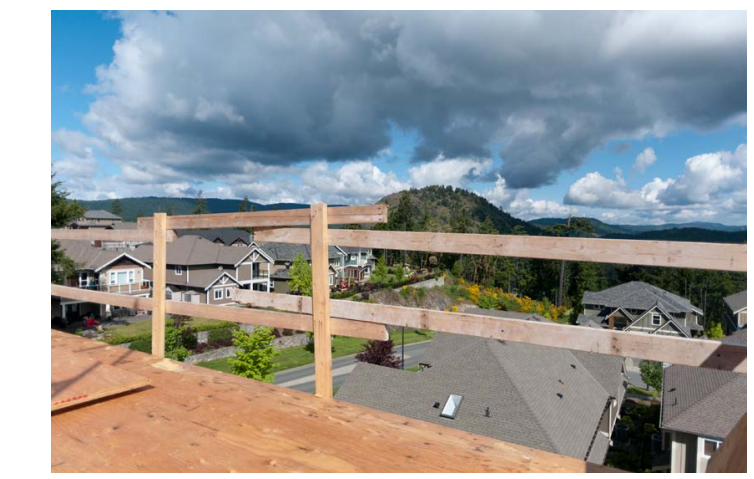LEARNING TASK 4 : Describe general safety precautions and procedures
Safety precautions when working at elevations
Falls from elevated areas are one of the leading causes of fatalities in the workplace. While the risk of falls is high, there is much you can do to safeguard yourself. Following proper safety procedures and staying alert at all times will help you stay safe when working at an elevation.
Wind
If your work area is exposed to the wind, a windbreak should be constructed from plywood, polyethylene sheets, or tarps. In high-rise construction it’s common practice to provide a windbreak at each floor until the glazing has been completed. Remember, strong winds can cause your body to lose heat much faster than if the air is still, so it’s important to wear windproof clothing.
Wall and floor openings
Any opening in a wall or floor is a safety hazard. For protection, openings can be either covered or guarded. Cover any hole whenever possible. When it is not practical to cover a hole, use barricades or guards. The types of guards and barricades used will vary from job to job.
There are different rules and procedures related to covering and guarding wall and floor openings. You will use the WorkSafeBC regulations as a minimum guideline, but you will also need to become familiar with the policies on your job site.
Guards and barriers
Except for work platforms (scaffolds) where fall protection is provided, guards are required whenever there is a drop of 1.22 m (4 ft.) or more. Guards and rails must be placed at stairways, openings in floors, and the edges of open floors. Guardrails consist of a top rail, a midrail, and a toe-board. The toe-board is to prevent tools and materials from dropping through the openings.
Ladders
Ladders are used to perform work in elevated locations. You may use ladders to do many jobs, and you must be familiar with the safe use of all types of ladders. Types of ladders and the proper use of each are covered in detail later in Competency C-4: Describe Ladders and Platforms.
When climbing or working from a ladder, an important rule to protect yourself against a fall is to maintain three-point contact with the ladder at all times. This means that you either have two hands and one foot or two feet and one hand touching the ladder constantly.
The following precautions and procedures apply to all portable ladders:
- Inspect all portable ladders before use.
- Do not use ladders with loose, broken, or missing rungs, split side rails, or other dangerous defects.
- Ensure that aluminum ladders have all members true and straight.
- Remove from use any aluminum ladder with bends, kinks, or other damage.
- Have damaged ladders repaired by an appropriate, reputable firm before putting them back into service.
- Use only transparent protective coatings or preservatives on wooden ladders, so that possible defects will remain visible on inspection (no paint).
- Never reach more than one arm’s length beyond the side of the ladder.
- Do not carry heavy or bulky items while going up or down ladders. Maintain three points of contact.
Always face the ladder when climbing up or down. Ensure that all ladders used:
- bear the appropriate Canadian Standards Association (CSA) label
- are placed on a firm and level base
- are positioned so that the horizontal distance from the base to vertical plane of support observes the 1:4 ratio
- have sufficient length to project approximately 1 m (3 ft.) above the upper landing to which it provides access, and
- are secured when necessary to ensure stability during use
Work platforms
The term “work platforms” refers to a variety of different elevated or suspended work surfaces. This includes scaffolding and the more common boom lift or scissor lift. The chart in Figure 4 outlines the common types of work platforms.

Guardrails
Temporary work platforms require guardrails where there is a drop of 3 m (10 ft.) or more. Guardrails consist of a top rail and a midrail. Toe-boards are also required in cases where materials or tools are placed on the work/travel surface and could fall off. The height of a guardrail should be between 1020 and 1120 mm (40-44 in.). The midrail should be approximately halfway between the work/travel surface and the top rail.


